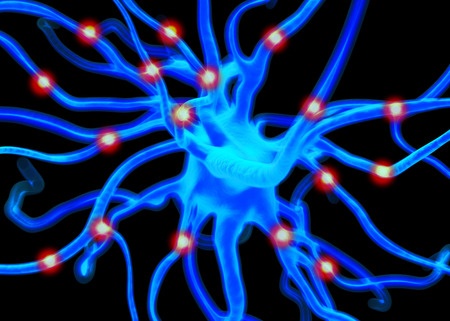New research from the University of Aberdeen has found a new way to repair injured spinal nerves.
Researchers achieved significant regrowth of injured spinal nerves in rats when they activated a specific molecule found in nerve cells.
Dr Wenlong Huang, Dr Derryck Shewan and Dr Alba Guijarro-Belmar from the Institute of Medical Sciences found that activation of a molecule called Epac2 resulted in significant improvement in the regrowth of nerves that had been severed following spinal cord injury.
This is the first time that activation of Epac2 has been found to enhance nerve growth following spinal cord injury.
In the study, published in The Journal of Neuroscience, the researchers modelled human spinal cord injury in rat nerve cells in a cell-culture dish. The team delivered the treatment using hydrogel - a new, minimally invasive technique that has two functions; it can carry treatment molecules to a specific site and then slowly release them, and it can also provide a scaffold to physically support injured nerve processes across an injury site.
Following this success, the team conducted pilot work in which the Epac2 activating hydrogel was injected into rats with spinal injuries. Again, this was successful, and the rats showed significant improvement in their ability to walk.
Dr Shewan explained: “Adult spinal nerve cells have very limited ability to regrow which makes recovery from spinal cord injury very difficult. We knew that Epac2 molecules are important for nerve growth during embryonic development so it is logical that it may have the same effect on adult nerve cells – encourage them to regenerate.
“This is something that other researchers have tried around the world in many different ways, but we found that our method actually works and is also very efficient.”
In another first, not only did Epac2 stimulate growth, the researchers also found that it changed the internal environment at the injury site, making it more amenable to nerve regrowth and healing.
Dr Guijarro-Belmar explained: “During our investigation we found something else that has never been reported before.
“We thought that the Epac2-activating drug would ‘turbo-charge’ the injured nerve cells, helping them to repair, but we also found that it can profoundly reduce the inhibitory nature of the environment around the injury site, so it also influences recovery in that way.
“The injured spinal nerves not only regenerated more robustly, they sensed the surrounding environment was not as inhibitory anymore, so the damaged nerves could more successfully regrow and cross the injury site.”
Dr Huang explains: “Currently there is no cure for spinal cord injury, so our mission is to find better strategies to help the injured spinal nerves to regrow.
“The use of self-assembling hydrogel technology in spinal cord injury is relatively new and if it were to be used by neurosurgeons, could provide a more precise and less intrusive treatment than traditional invasive surgery.
“Our research found that by targeting Epac2, we could potentially improve the mobility of rats with spinal injury. This is an exciting discovery with tremendous potential for the future treatment of spinal injury patients.”
Mark Bacon, Executive and Scientific Director from International Spinal Research Trust who partly funded the research, added: “Repairing the damaged spinal cord remains one of the greatest challenges in medicine.
“We are really proud to have been able to support this exciting, ground-breaking work by Dr Huang and his team at Aberdeen.
It is a fantastic demonstration of what can be achieved when combining therapeutic strategies. Discoveries such as this are paving the way to effective treatments that one day will help restore functions many of us take for granted.”
ENDS


